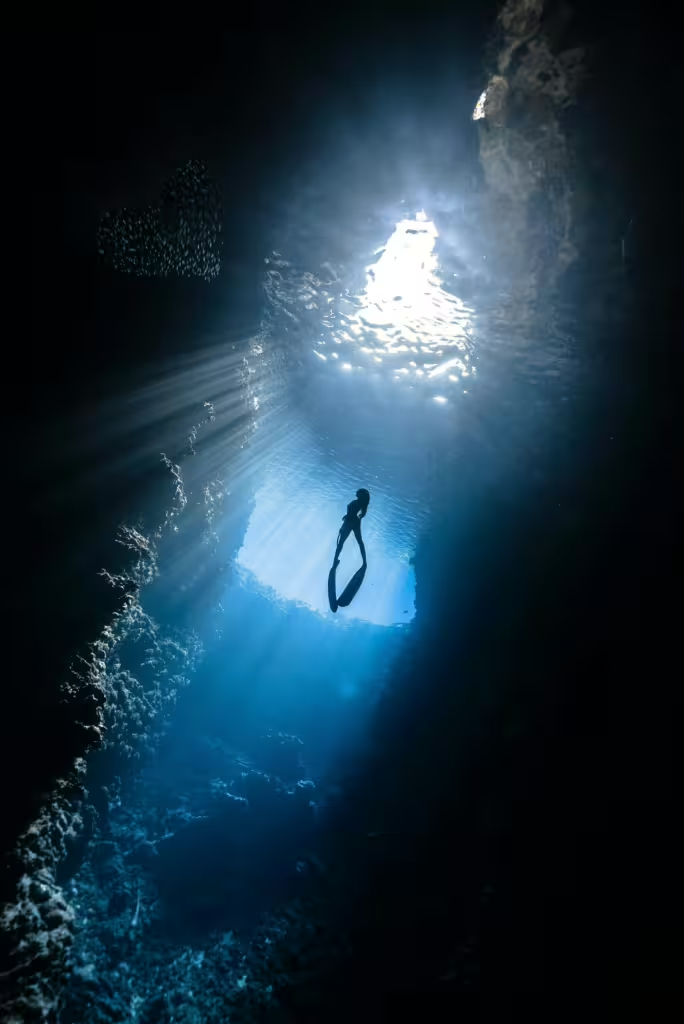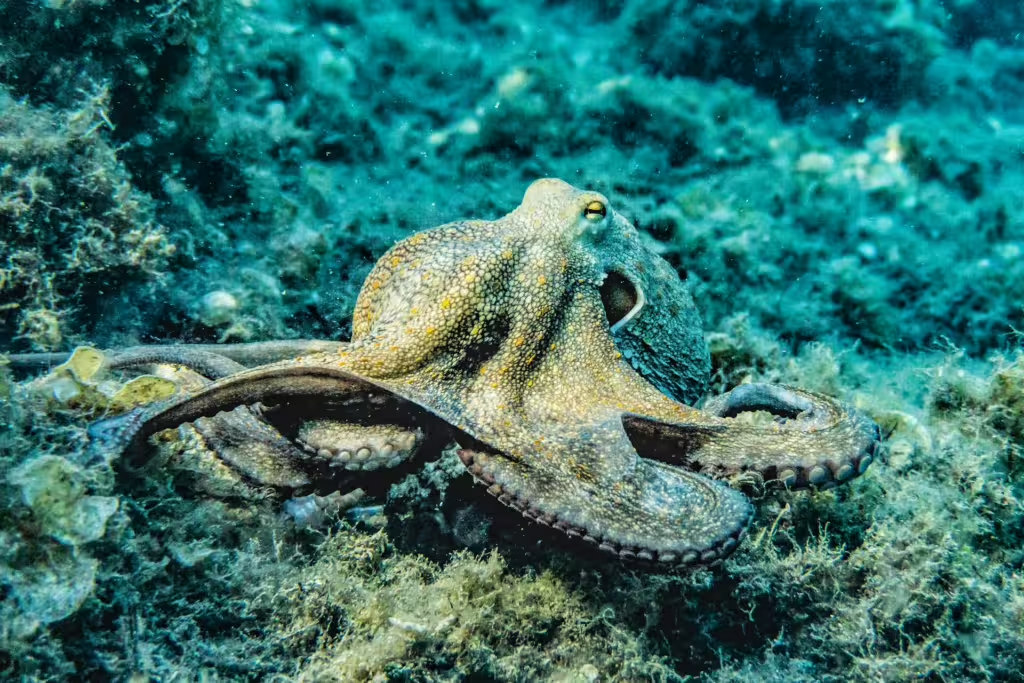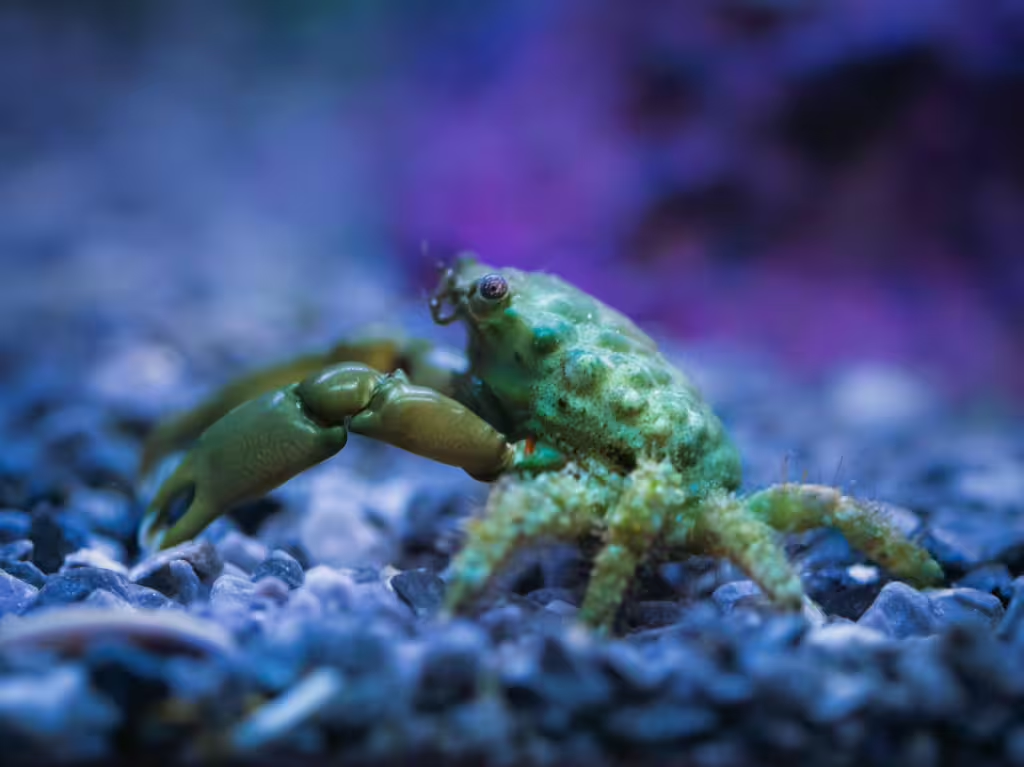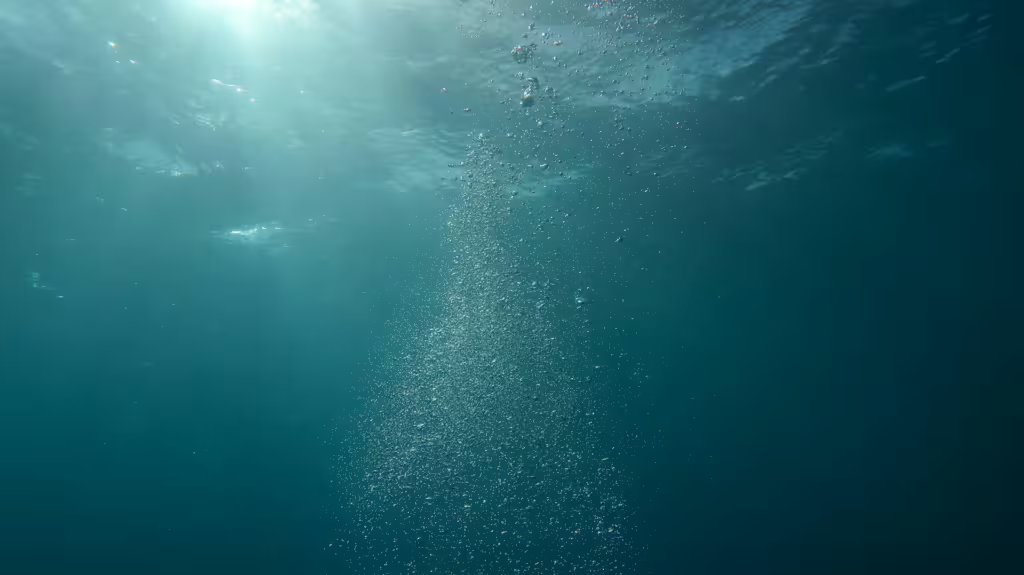There is little that we know about the vastness of space and in many ways, the deepest places on our own planet remain a similar mystery. Whether because of the crushing pressure, the lack of oxygen, the constant volcanic activity, or a lethal combination of all three, much of the world’s deep ocean remains off-limits to all but the bravest and most well-equipped explorers.
Thus, the deep sea remains one of the most mysterious environments on Earth. In this extreme place, where light and air have little influence, living things continue to dwell; having found their own unique ways to adapt to this dark and desolate life. Among the deep ocean’s most intriguing features, besides the vast emptiness, are strange portals to the planet’s core. These hydrothermal vents, essentially cracks in the ocean floor. emit superheated, mineral-rich water out into the ocean. And even here, thousands of meters beneath the ocean’s surface, certain critters scurry along; heedless of how truly remarkable they really are.
Make no mistake, these hydrothermal vents are inhospitable to most life forms due to the aforementioned extreme temperatures, crushing pressures, and total darkness, creatures find ways to persist. Against all odds, an astonishing variety of creatures have evolved to thrive in these deadly conditions. In this article, we will explore a handful of the most curious. We will examine the lives of the fascinating animals that call these undersea vents home, while delving deep into how these simple animals can survive in one of the most brutal and uncompromising environments on the entire planet.
The Unique Environment of Hydrothermal Vents

We chose the above image on purpose. To truly understand how deep these hydrothermal vents are located, you really need to get a scale of the entire ocean floor. Most vents occur at an average depth of about 2,100 meters, about 7,000 ft. below the water’s surface. They are typically found along mid-ocean ridges, where tectonic plates have begun to spread apart. What happens is this; seawater seeps into the cracks in the Earth’s crust, where it gets heated by underlying magma, and then bursts back out, carrying dissolved minerals like iron, sulfur, and manganese into the water. The resulting plumes of minerals are hot, extremely so, and can reach temperatures of up to 400°C (750°F). As they rise up into the water, they create towering structures called chimneys or “black smokers.”
Despite these harsh, almost apocalyptic-sounding conditions, hydrothermal vents support entire ecosystems all their own. In these deep places, where sunlight does not penetrate, life is sustained but a form of chemosynthesis. This process involves bacteria and archaea converting chemicals from the vent fluids into energy, much the way photosynthesis allows plants to convert sunlight into energy. The microbes that dwell near these vents form the foundation of the food chain in these unique ecosystems, supporting a variety of unique species that have adapted to life in these deep-sea hot spots.
Animals That Thrive Near Hydrothermal Vents
Giant Tube Worms (Riftia pachyptila)
If you’re at all familiar with the undersea world, you may have heard of or seen one of the most iconic and unusual looking animals on the planet. Hydrothermal vent ecosystems are home to giant tube worms, lipstick-looking invertebrates that operate like few other creatures on Earth. Giant tube worms are aptly named, growing up to 8 feet in length. These striking creatures lack a mouth and digestive system, two things which even the simplest earthworms and flatworms possess. Instead, the tube worms rely entirely on symbiotic bacteria living within their bodies. It is that same bacteria, mentioned earlier in the article, which converts hydrogen sulfide from vent fluids into nutrients that the worm can then use.
The red plumes at the top of the worms contain hemoglobin, which helps transport oxygen and sulfide to their bacterial bedfellows. Tube worms are completely immobile but grow by clustering together in dense colonies around the vents themselves. The result is an even more surreal-looking underwater landscapes.
Pompeii Worms (Alvinella pompejana)
Other worms also dwell in the spaces where the volatile Earth emerges into the deep ocean. The aptly-named Pompeii worms are among the most heat-tolerant animals on the entire planet. These resilient worms can withstand temperatures up to 176° Fahrenheit, not far off of boiling. As a result of their near-fire resistance, these worms are considered to be extremophiles. They live in tubes attached to vent chimneys, where they place their heads in cooler waters as their tails dip below, better able to endure the extreme heat.
As with the giant tube worms, Pompeii worms have a thick layer of heat-resistant bacteria that coats their bodies. This bacteria not only helps the creatures to live and breathe, they providing insulation and potentially aid in a form of detoxification. This extraordinary adaptation and relationship with the bacteria is what allows Pompeii worms to thrive in conditions that would almost certainly prove lethal to most other life forms.
Vent Crabs (Bythograea thermydron)
Crustaceans, such as the ghostly white vent crabs that dwell near the hydrothermic vents of the deep ocean, are some of the hardiest, most adaptable creatures on Earth. Crabs, shrimp, plankton, lobsters, and their arthropodal, land-dwelling cousins are among the oldest animals on the planet. Therefore, it should come as no surprise that they have found ways to evolve and survive in even the harshest natural ecosystem in the world. Sometimes called “blind crabs”, vent crabs are common residents of hydrothermal vents. Their lack of pigmentation is not simply a fashion choice, but an adaptation to the lightless deep-sea environment in which they dwell.
Though they are often referred to as blind and often appear to be so, vent crabs actually have specialized organs that help them detect the faint glow emitted by vent chimneys. These light-sensitive patches don’t help much, but the fact that the crabs are highly opportunistic feeders helps a great deal. As with most scavenging critters, vent crabs help in nutrient cycling within the hydrothermic ecosystems. They feed on dead organisms, bacterial mats, and will even prey on smaller vent inhabitants when the opportunity presents itself.

Vent Shrimp (Rimicaris exoculata)
Even a few shrimp have found ways to survive and thrive the dangers of the deep. Vent shrimp are another key species within these hydrothermal ecosystems. Unlike typical shrimp, these little buggers have modified eyes that allow them to detect infrared radiation emitted by vent plumes. This enables them to navigate their environment with more ease than most. As with the vent crabs, these shrimp graze on bacterial mats that grow on vent structures for sustenance, but they also learned a thing or two from the giant tube worms. That’s right, vent shrimp also play host to symbiotic bacteria, which lives on their gill chambers, providing them with additional nutrition.
Scaly-Foot Snail (Chrysomallon squamiferum)
One of the most extraordinary animals found near hydrothermal vents is a snail that is essentially clothed in metal armor. The recently-famous scaly-foot snail is a remarkable deep-sea mollusk that possesses a shell reinforced with iron sulfide. You read that correctly, this snail is perhaps the only known animal with a metallic outer layer. As if that weren’t enough, the scaly-foot snail is so-named because it actually has scaly footplates covered in similar iron compounds. This all-encompassing armor offers the snail protection from predators and the heat that surrounds it. Like many other vent dwellers, the scaly-foot snail also harbors symbiotic bacteria, which help it to convert vent chemicals into food.
Deep-Sea Octopuses
Cephalopods are already incredible for a multitude of reasons and in fact, several species of deep-sea octopuses, including the famous Dumbo octopus, have found ways to live in and around hydrothermal vents. The Dumbo octopus has often been observed floating near hydrothermal vents with little care for the actual danger it might be in. Though these animals do not rely on vents for sustenance, they are drawn to these areas due to an abundance of prey. As one might expect, these octopuses are well adapted to the deep sea, and their soft, gelatinous bodies can withstand high pressure. At the same time, the octopus’ large, sensitive eyes allow it to detect even the faintest light in the dark water.
Vent Fish
Besides worms, snails, crabs, and octopi, there are actually some species of fish that can survive the high pressure, chemical-filled waters of the hydrothermal ecosystem. Eelpouts and grenadiers are two examples of these and are frequently found around hydrothermal vents. These two fish species have adapted to the deep-sea environment by developing slower metabolisms than their upper pelagic brethren. They also have specialized enzymes that function more efficiently under high pressure. While they do not rely directly on vent chemicals for survival, they prey on other vent-dwelling critters. This makes them an integral part of the hydrothermal food web.
How These Animals Survive in Extreme Conditions
Chemosynthetic Symbiosis
As you may have guessed, many hydrothermal vent species rely on symbiotic relationships with chemosynthetic bacteria. These bacteria are used in place of using sunlight, as they can extract energy from hydrogen sulfide or methane, providing essential nutrients for their host organisms. It is this wholly-unique adaptation which allows vent organisms to flourish in complete darkness.
Heat and Pressure Tolerance
The creatures that dwell in the shadow of hydrothermal vents have developed remarkable tolerance to extreme temperatures and pressure. Pompeii worms can withstand the boiling temperatures of the ocean deep, while deep-sea fish and octopuses have specialized proteins and cell membranes that function under even the most immense pressure imaginable.
Heavy Metal Adaptation
Species like the scaly-foot snail have even found ways to evolve so that they incorporate metals into their shells and body structures, making them uniquely suited to the mineral-rich environment of vents.
The Importance of Hydrothermal Vent Ecosystems
Unique though they may be, hydrothermal vent ecosystems are crucial for deep-sea biodiversity. These strange places provide us with valuable insights into the origins of life on this planet. Indeed, some scientists believe that life on Earth may have originated around these hydrothermal vents, as similar chemical reactions could have provided the first energy sources for primitive life forms. In addition, studying vent organisms helps researchers understand extremophiles like the Pompeii worm and the tardigrade, which may hold clues about potential extraterrestrial life.

Threats to Hydrothermal Vent Life
Deep-Sea Mining
Many hydrothermal vents contain valuable minerals such as copper, gold, and rare earth elements that have been highly sought-after in recent years. Thus, many deep-sea mining operations have begun to plumb these as-yet-unmined resources. This type of mining poses a serious threat to these fragile ecosystems, potentially destroying habitats before they can be fully studied.
Climate Change
Although vents are deep underwater, they are not immune to the effects of climate change that already impact ocean ecosystems. Ocean acidification and changing currents have the potential to disrupt the delicate balance of vent ecosystems, which rely on sensitive bacteria to function.
Overfishing and Pollution
Even in the deepest parts of the ocean, human activities such as overfishing and pollution are having an impact. Increased plastic waste and chemical pollutants are changing water chemistry in every waterway on the planet, as well as in the rainwater itself, so it could impact vent species just as easily, likely in ways we do not fully understood.
True Investigator Says…
As you can see, hydrothermal vents might be distant and dire, but they remain some of the most fascinating and extreme ecosystems on Earth. These dangerous places are home to remarkable animals that have adapted to survive in complete darkness, extreme heat, and high-pressure environments. They live on bacteria and resist heat and chemicals that would slay many other species, and their very existence gives humanity greater understanding of what life can endure.
Sadly, as human activities encroach upon these deep-sea wonders, it becomes even more crucial that we take the time to study and protect the hydrothermal ecosystems…before they are lost to exploitation. By exploring hydrothermal vents, scientists gain insight into the resilience of life on our planet, bringing us one step closer to understanding the possibilities of life on the planets beyond.
Discover more from TrueInvestigator
Subscribe to get the latest posts sent to your email.


